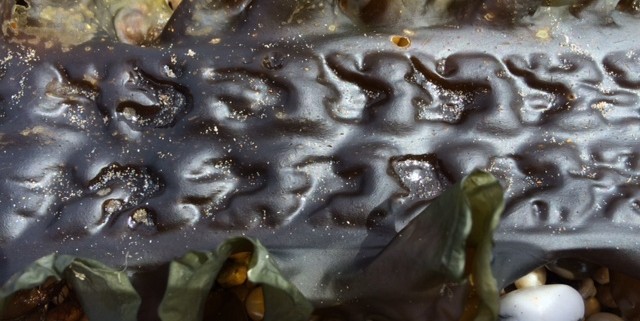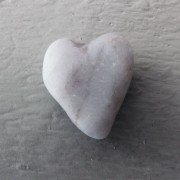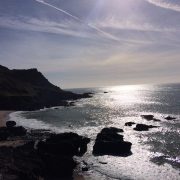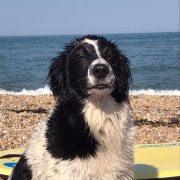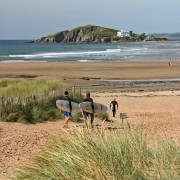Why was the sand wet? Because the Seaweed!
My children are always wandering off into rockpools in search of marine life. Many of our local beaches have excellent rockpools including Lannacombe, Bantham, Bigbury and Hope Cove.
Crabs, limpets, anenomes, shrimps, blenny and occasionally a starfish can all be found lurking in the shallow waters.
You can find a useful guide to what you might find rockpooling at Hope Cove here
http://www.hopecove.com/out-and-about/animals/rock-pooling
and a guide on How to Rockpool here
https://www.nationaltrust.org.uk/features/rockpooling-guide-for-families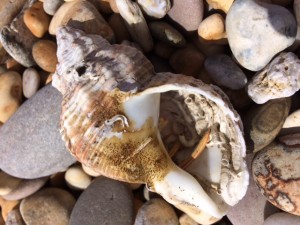
Today at Hallsands the children found the remains of a Hermit Crab hiding inside a shell.
Hermit crabs live inside the empty shells of snail-like animals, particularly whelks and periwinkles. They live on sandy and rocky shores, where they scavenge on plant and animal remains. They have hard pincers, but a soft body which is hidden inside the shell.
Seaweed is often overlooked as the children slip and slide their way over the rocks in search of more dazzling finds. However, my children enjoyed throwing seaweed at each other using the long strands to restyle their hair!
Seaweeds are at the base of the marine food chain Many animals rely on seaweeds for food and shelter. Changing sea conditions, climate change and the arrival of invasive species may be having an impact on the ecology of UK seaweeds and many other marine organisms.
Today we found lots of wobbly edged Sugar Kelp 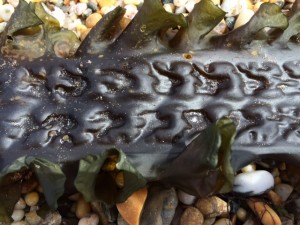 , sea lettuce and thong weed- all of which are edible if it takes your fancy- Take a look at this recipe if you are! http://cornishseaweed.co.uk/cook-with-sea-spaghetti/
, sea lettuce and thong weed- all of which are edible if it takes your fancy- Take a look at this recipe if you are! http://cornishseaweed.co.uk/cook-with-sea-spaghetti/
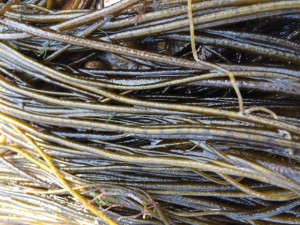 For an in depth guide to seaweeds and to take part in the Natural History Museum Big Seaweed Survey download this link
For an in depth guide to seaweeds and to take part in the Natural History Museum Big Seaweed Survey download this link
The children then helpfully reminded me of the old joke “Why is the sand wet? Because the Seaweed”!

